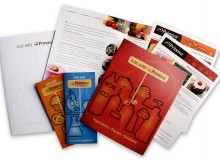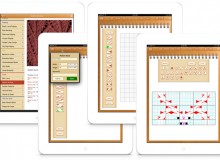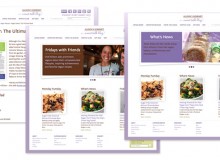 Building a basic public relations program requires as much perspiration as inspiration. You must have a commitment to doing PR activities consistently and in a professional manner that will create demand for your news and subject matter expertise. The better you understand the rules, the better you’ll be able to play the game.
Building a basic public relations program requires as much perspiration as inspiration. You must have a commitment to doing PR activities consistently and in a professional manner that will create demand for your news and subject matter expertise. The better you understand the rules, the better you’ll be able to play the game.
Here’s what you need to gain more exposure:
- Learn how to develop a media list. There’s nothing more important than this database, so you have to spend some time getting the appropriate contacts and keeping the list updated. Determine the right local, regional, national and international media (newspapers, magazines, newsletters, blogs, radio and TV stations) contacts for your organization. Most of the information you need is readily accessible.
- Learn how to develop relationships. Commit time to getting to know your media contacts. If possible, arrange a media tour, which is a series of individual meetings or a single event to promote your organization, product, or service to members of the media. For example, you might arrange meetings with the local newspaper business editors, or travel to see key members of the trade publications that cover your segment. Another approach is to invite members of the trade media attending a trade conference to a briefing. This works especially well if you have a newsworthy product or service to introduce.
- Learn how to create a press kit. Regardless of your approach, make sure you prepare and have something to say. One of your goals is to establish your organization as a thought leader worthy of being quoted in an article—or perhaps even authoring the article—so be sure to look the part. That means having a press kit (See “How to Create a Winning Press Kit” in this issue), presentation materials and either an internal or external representative trained in interfacing with the press.
- Learn how to write a news release. The better you do this, the more likely you are to receive free publicity. Not only do professionally written and presented news releases make you appear more credible, but increasingly understaffed media outlets also value copy that provides a solid foundation for an article without heavy rewrites. When you’re composing a news release, focus on the “news” element while emphasizing the basics of who, what, when, where and why. News releases with a good, crisp, relevant photo also tend to get more play. Digital cameras and the fact that most news releases are now submitted via email make the entire process easier and less expensive than ever.
- Learn what’s newsworthy. There is likely more news in your organization than you think. A good practice is to form an internal “news team” that identifies newsworthy developments. You should set a goal of issuing at least one news release per month. Here are some items you should consider newsworthy:
- New staff additions or promotions at the manager level and above
- Capital investments in facilities, equipment and systems
- Major new contracts or customer acquisitions
- Company milestones—significant company and product anniversaries (AARP Turns 50, etc.)
- New products, technologies or services
- Significant customer benefits delivered in cost savings, time-to-market or quality improvement
- Awards and honors—remember you usually have to enter to win
- New corporate initiatives—sustainability, internships, etc.
- Community relations—sponsorships, major contributions, scholarships, employee service programs, etc.
And remember this important takeaway: PR is for your customers too. Be sure to mail or email your news releases to your clients as well as the press. There’s no better way to continually let your customers know that you have an exciting, growing business and remind them of why they chose you in the first place.
What if You Don’t Have the Internal Resources?
MondoVox helps companies of all sizes with their PR programs. We can perform key services from developing a media contact database to writing your news releases and creating an effective press kit. Most importantly, we can help you develop a winning PR strategy that fits your budget and business requirements. For more information, email Julia Moran Martz.
— by Larry Bauer








